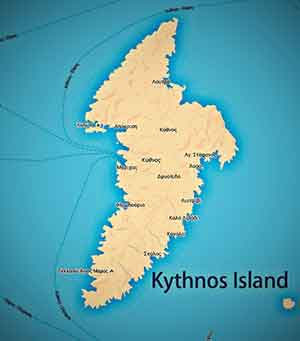The mining history of Kythnos, as well as most of the Aegean islands, begins from antiquity. Remains of the ancient mines one can see at Skouries where there was an open air copper smelting site. Also some of the galleries in Katafyki cave have been created for iron mining.
The modern history of mining in Kythnos starts in the middle of the 19th century and to be more accurate iron mines functioned from 1873 to 1940. The relics from mining can be seen throughout the island and include buildings, loading platforms, galleries and equipment that stand as a remainder of another era. Mining areas are part of the cultural heritage of Kythnos and one of the island's most interesting attractions. One can admire the ruins of the staff's houses as well as the buildings were the administration was.
In the village of Loutra one can see a loading platform in the bay as well as part of a building. Another platform is found in Lefkes, where the soil is red from the iron debris and what reamained from the rails that carried the cargo on ships.
During the history of Kythnos, a large number of mines operated, which also presented a fairly wide range of materials. From Kythnos artists of ancient Greece obtained the necessary minerals to make blue (azurite) and red (hematite) colour. The minerals mined from the Copper Age to the Roman times were iron and copper, and from the 14th century lead and manganese were added to them.
join.booking.com


























